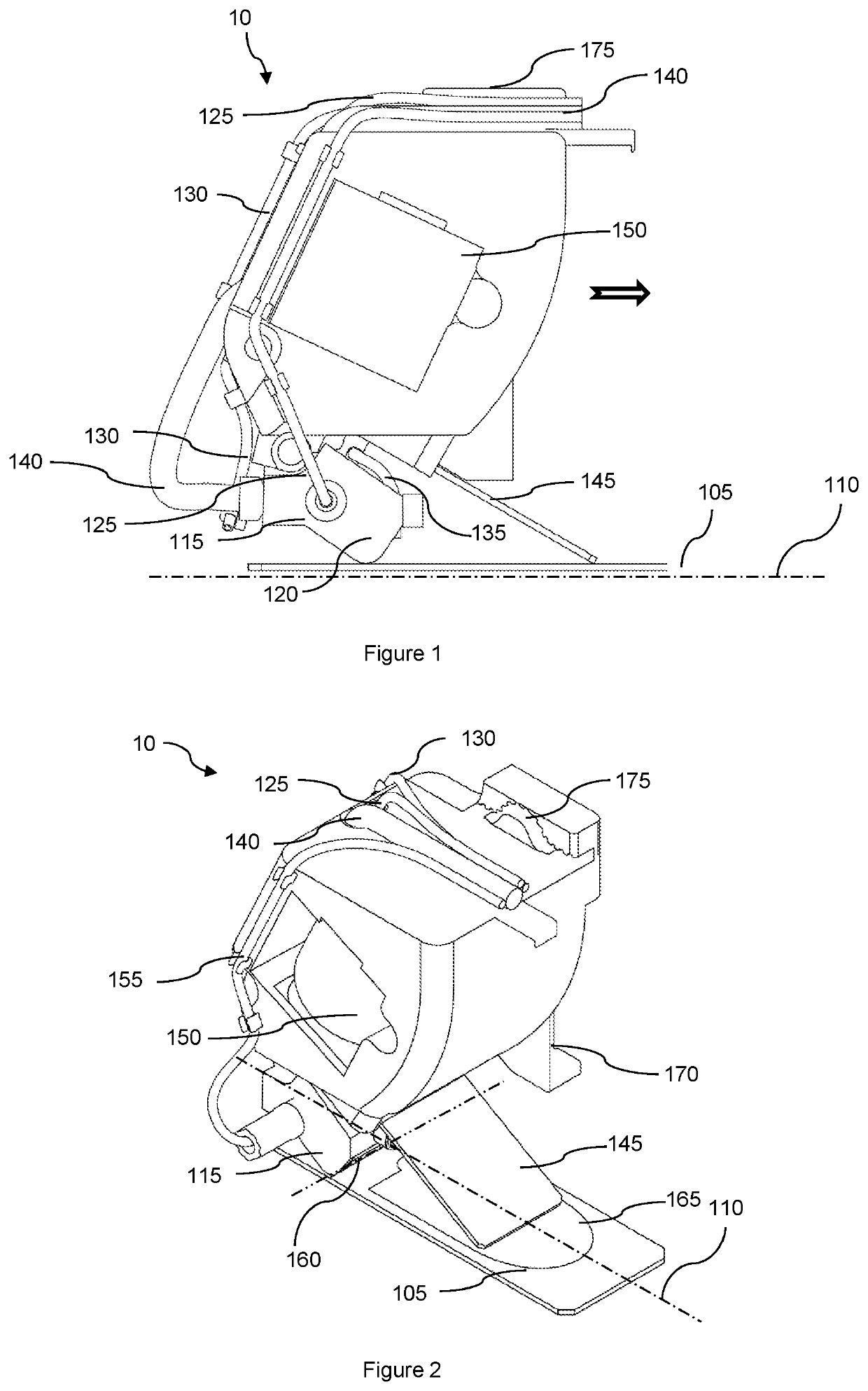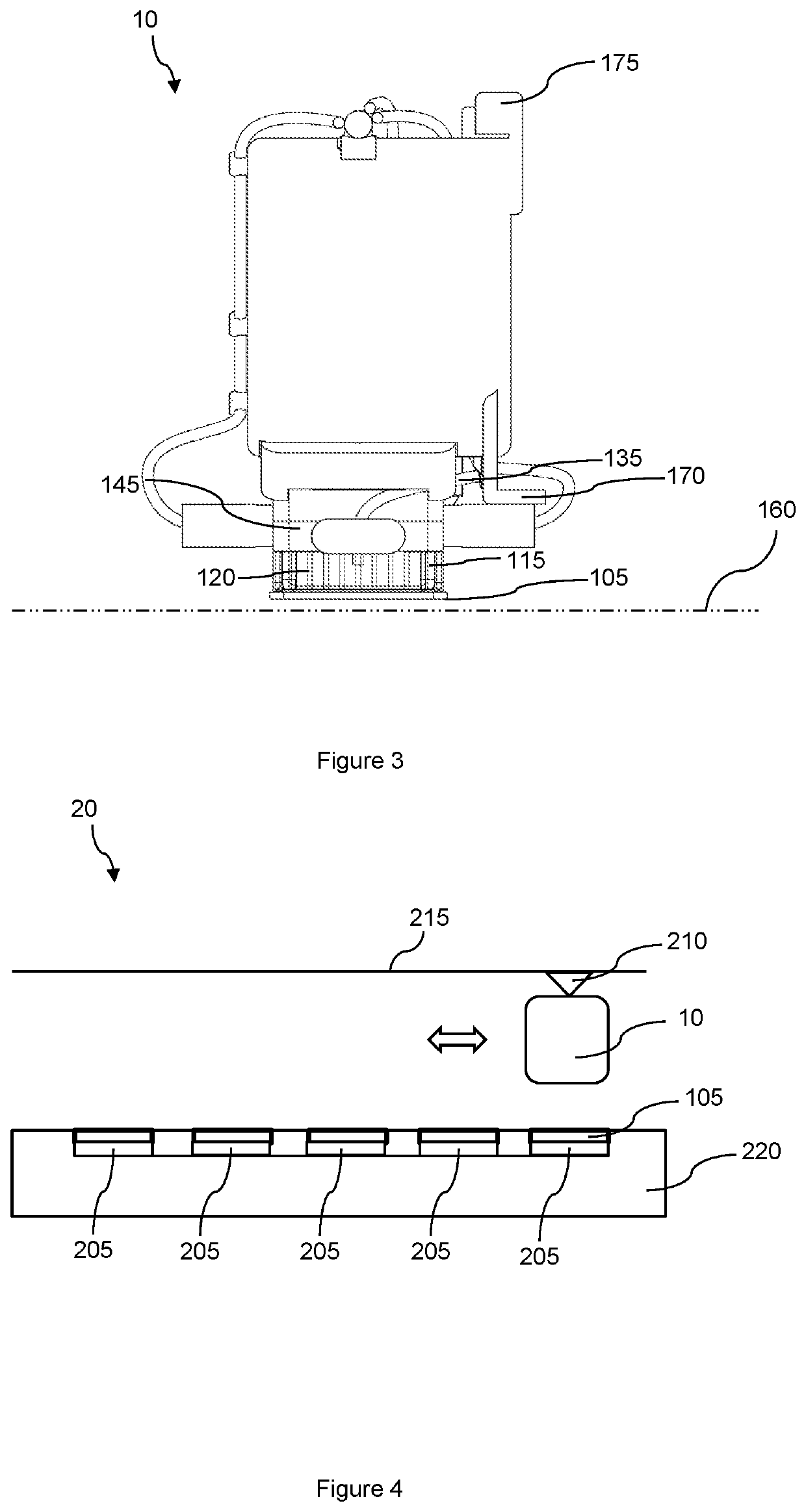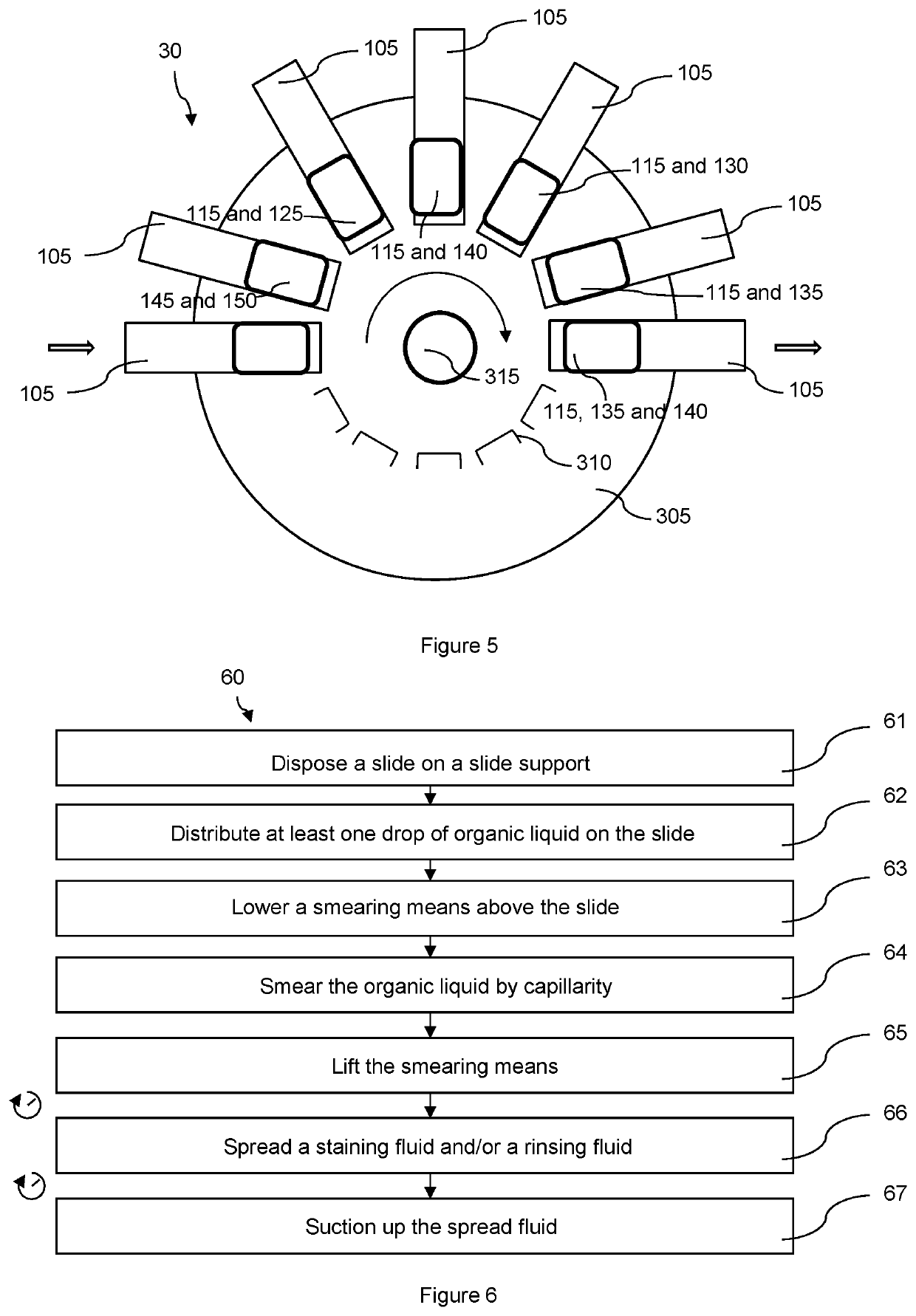Device and method of staining an organic material on a slide
- Summary
- Abstract
- Description
- Claims
- Application Information
AI Technical Summary
Benefits of technology
Problems solved by technology
Method used
Image
Examples
Embodiment Construction
OF REALIZATION OF THE INVENTION
[0070]The present description is given in a non-limiting way, each characteristic of an embodiment being able to be combined with any other characteristic of any other embodiment in an advantageous way. In addition, each parameter of an example of realization can be utilized independently from the other parameters of said example of realization.
[0071]The meaning of the following terms is noted here:
[0072]“juxtaposed” means elements are placed side by side;
[0073]“in succession” and “successively” means one after the other; and
[0074]“linear” refers to the continuous aspect of a line.
[0075]It is now noted that the figures are not to scale.
[0076]FIGS. 1 and 3 show several schematic views of an embodiment of the device 10 that is the subject of the present invention. The device 10 for staining an organic element on at least one slide 105 comprises a slide 105 support (not shown) on which is positioned the slide 105. The slide 105 defines an axis 110 contain...
PUM
 Login to View More
Login to View More Abstract
Description
Claims
Application Information
 Login to View More
Login to View More - R&D
- Intellectual Property
- Life Sciences
- Materials
- Tech Scout
- Unparalleled Data Quality
- Higher Quality Content
- 60% Fewer Hallucinations
Browse by: Latest US Patents, China's latest patents, Technical Efficacy Thesaurus, Application Domain, Technology Topic, Popular Technical Reports.
© 2025 PatSnap. All rights reserved.Legal|Privacy policy|Modern Slavery Act Transparency Statement|Sitemap|About US| Contact US: help@patsnap.com



